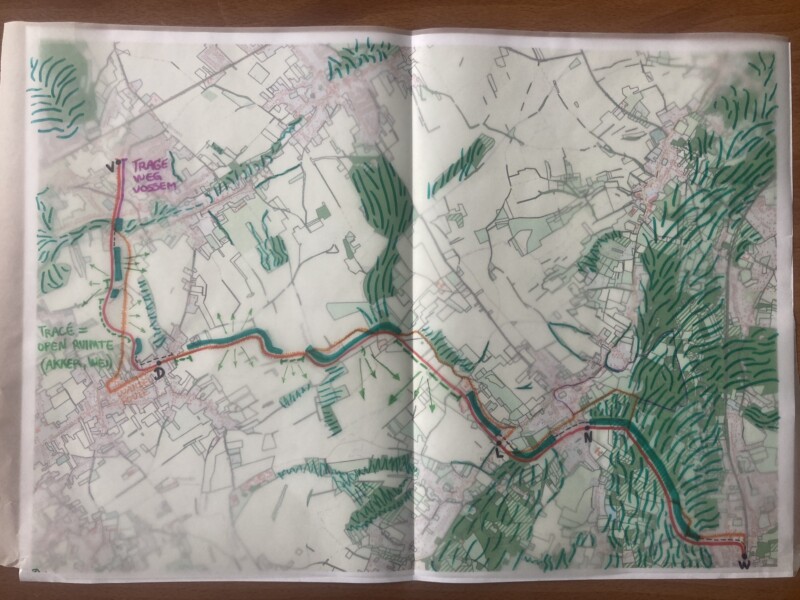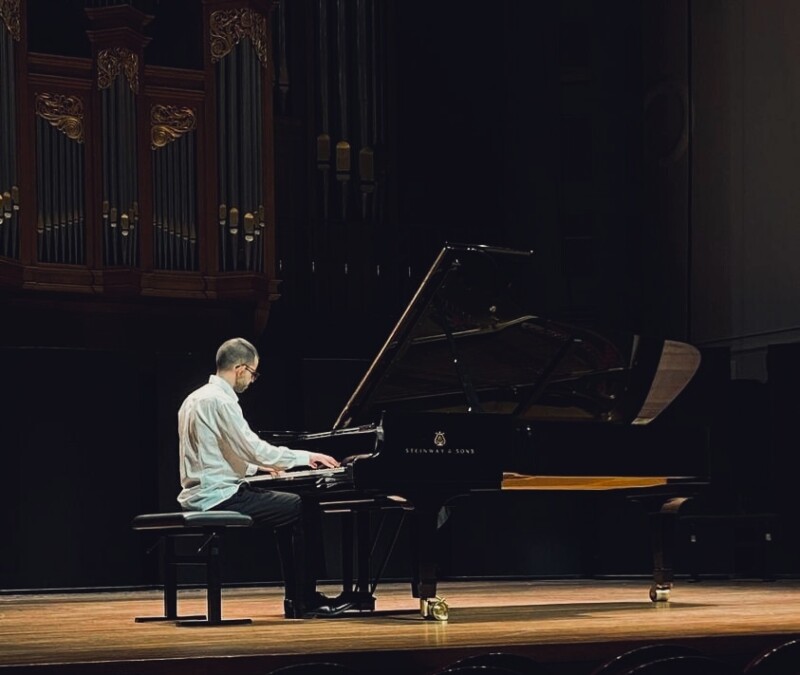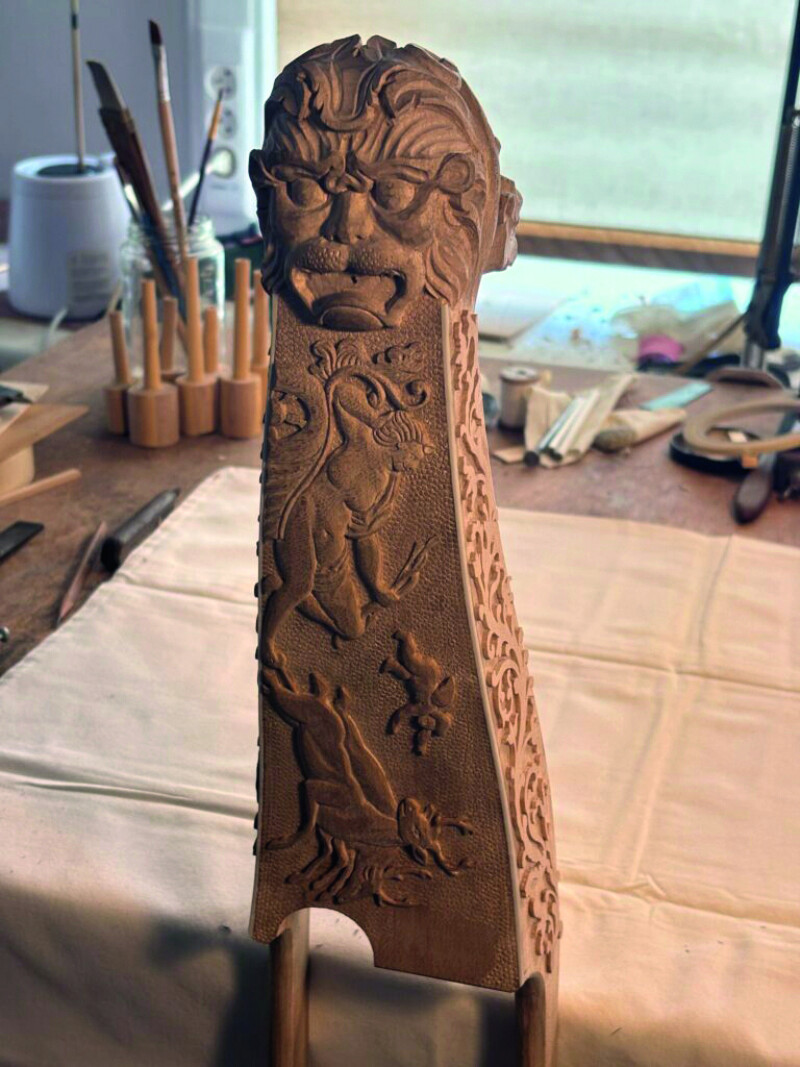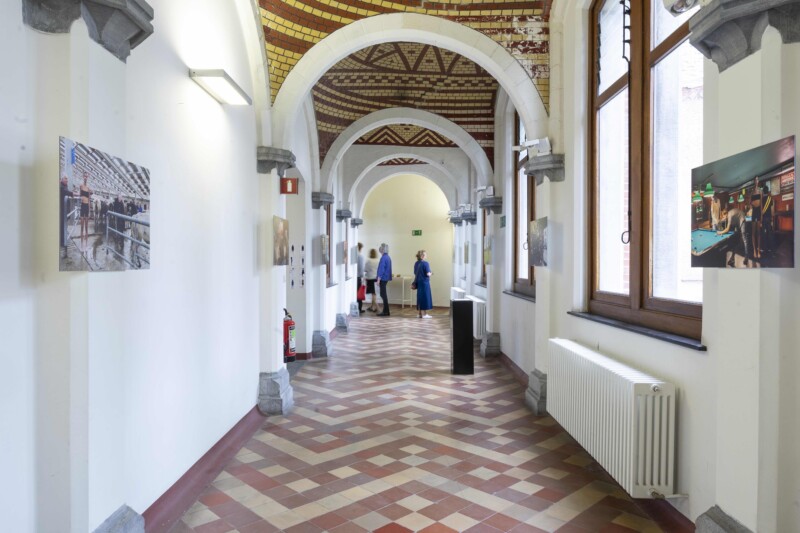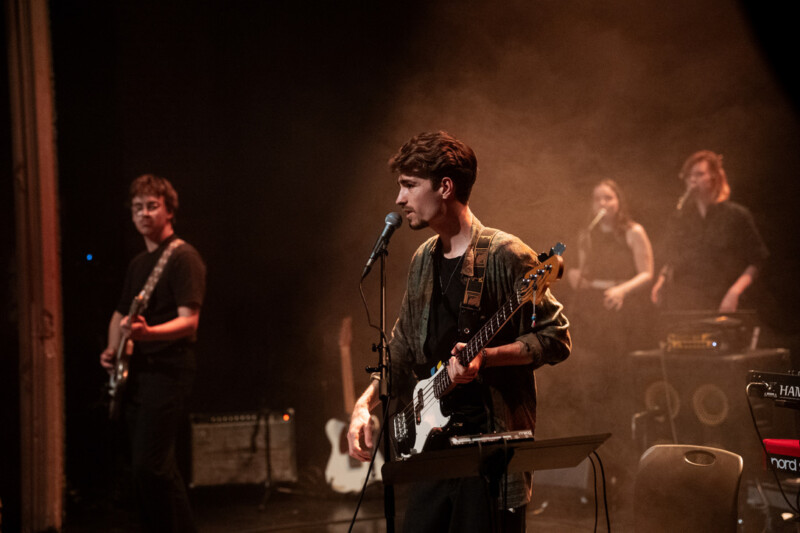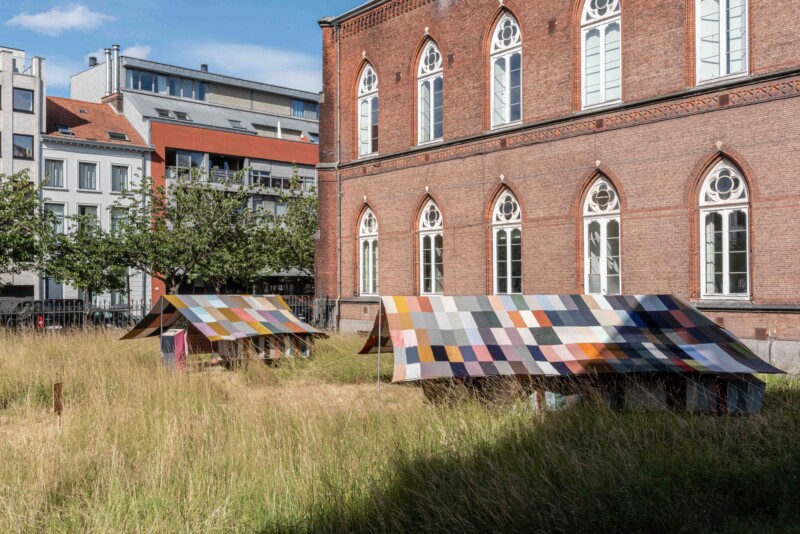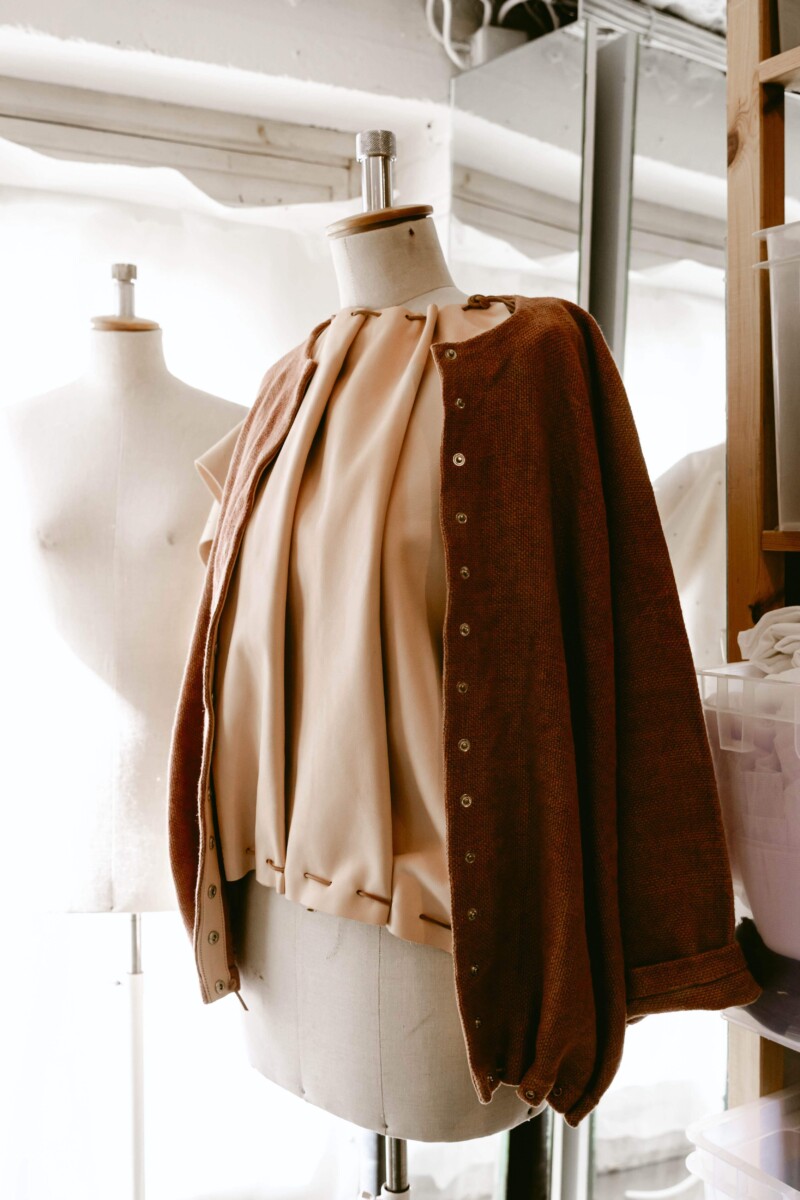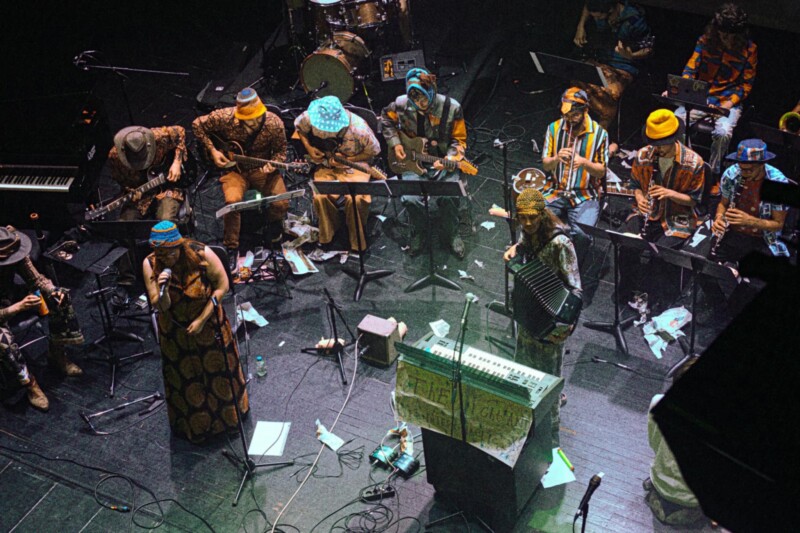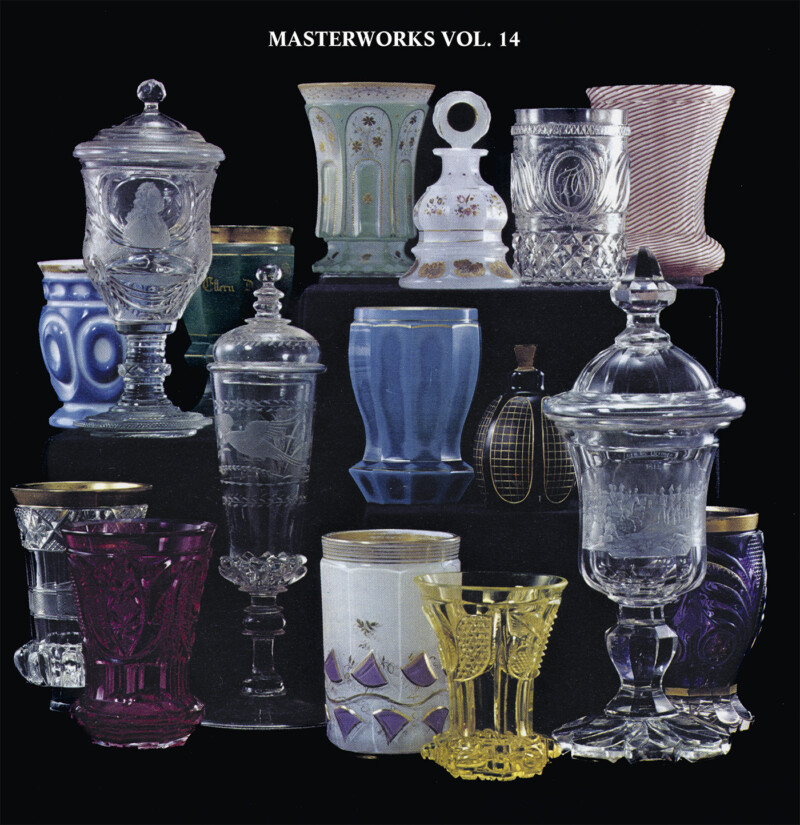Lennert Lefever
Film Titel Proposition; Einmalig

And with my very first sentence, I fell into the trap.
This is how Kaspar, an experimental play by Peter Handke from 1967, opens. It uses the figure of Kaspar Hauser — the boy who appeared in 19th-century Germany without language and without contact. He stammers and repeats a few sentences. “How someone can be made to speak through speaking... speech torture... a magic eye above the ramp.”With that same magic eye, we look at Lennert Lefever and his exhibition: a film screen, an A4 sheet on the ceiling, an apple with ‘einmalig’ carved into it, rotting in the corner, remnants of a film set, ‘re-enactment crew’ T-shirts, a triptych in the windows.

We observe these elements, sitting on L’s booktowers, book piles made for rest and contemplation.
One pile says:
Form = emptiness
Zenfrog
De mond van de aarde
How to stop filling stop digging
How to remix the world
mijn land in de kering I
holes 1
holes 2
The farmer, the hole, the sheep
The Hole in Far-Anderlecht
Sunyata
Je bent er al in
Empty your head
An other pile responds with:
Then, further
De put
البئر
Dira
井d
as loch
el agujero
En verder
deliği
the hole
le trou
dziura
o buraco
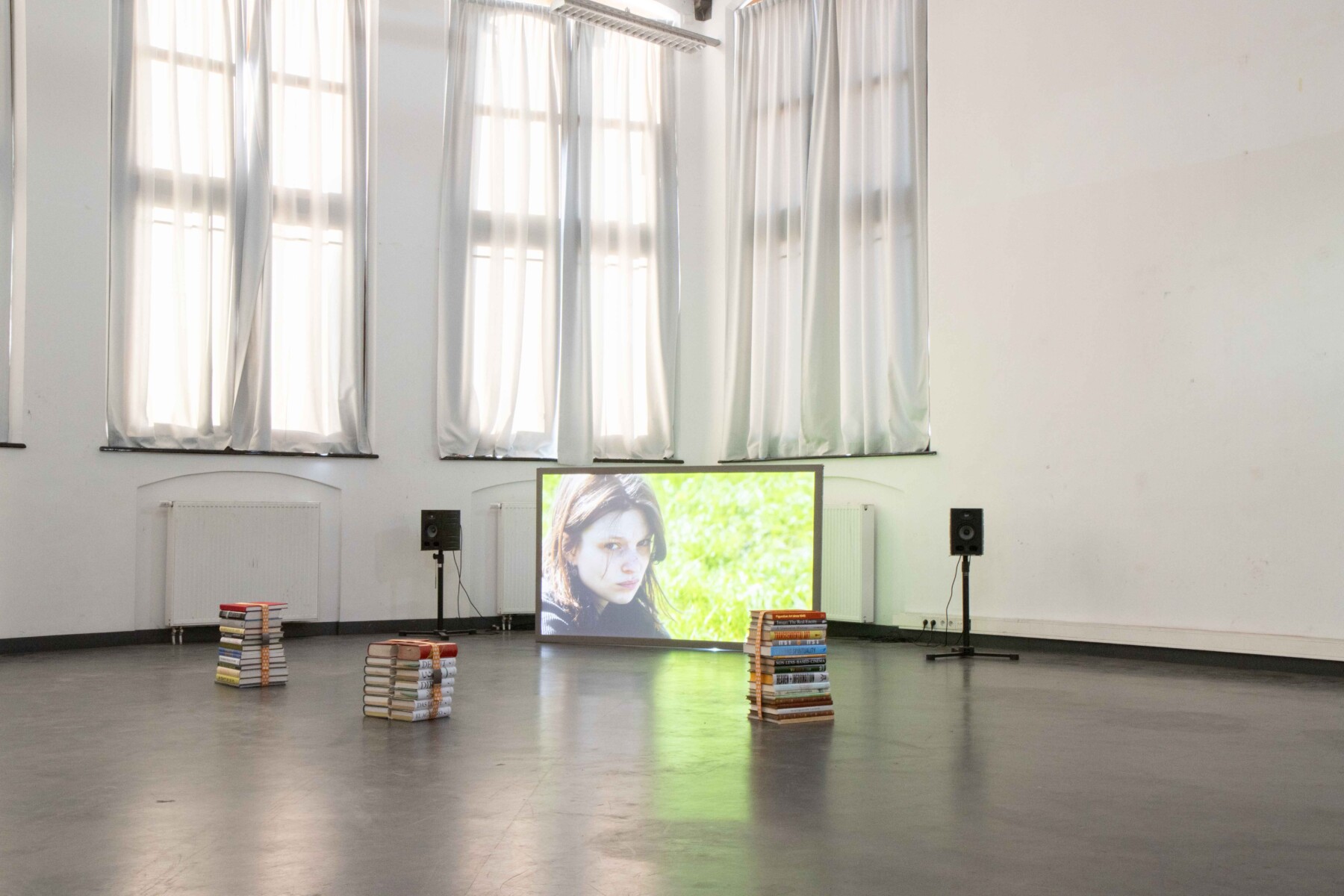
I am sitting on one book tower, Lennert on the other. On the back cover of one of the books, there is a comment from a proofreader:
Grip op de wereld proberen krijgen, zou het kunnen zijn.
I saw Lennert respond online with the question:
Geen liefdesbrief, noch waarschuwing – een generatieportret?
This portrait of a generation first took the form of a film.
I invited the master's students to come and witness the first tunnel being drilled from one side of the world to the other. We waited in a field on the outskirts of Ghent, where – that very day – the tunnel was supposed to complete itself and a hole would break through the ground.
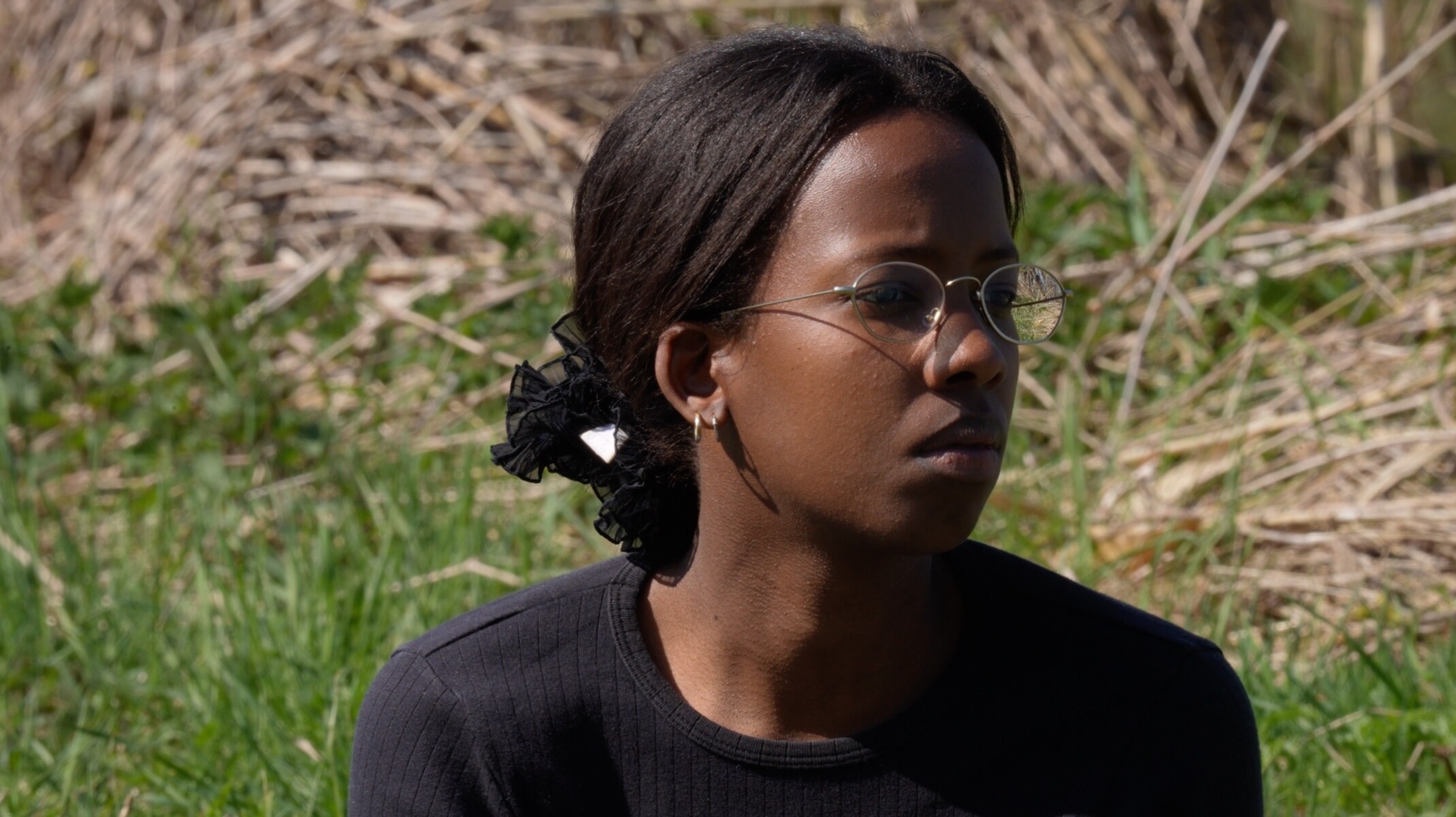

I see a portrait of a group of people waiting. They are standing and sitting gathered around an imaginary hole, sharing a moment. The Hole as a concept, a container, an occasion, just as The School was a framework for you? What does the school represent for you?
I take and use what is available in my immediate surroundings – people, rooms, events, trivialities – and use them as both material and context for my ideas. In this case: a school. I started by giving lectures to teachers in the archives of the Kunstenbibliotheek. Lectures, curiously enough, about work that did not yet exist at that time – projects that existed only as outlines or promises. Months later, I took the master's students on a field expedition with the promise of seeing a world phenomenon, a tunnel from one side of the world to the other. Later, when the work was finished, I trained my mentors to be attendants so that they could keep an eye on the work at my exhibition.
And so on and then, further. A succession of mutually informative interventions? What was it like to make a film about and with your fellow graduating students?
By examining my own generation, I try to capture our contemporary (Western) thinking and living. It felt like a sample, an attempt to get a grip on what is really at stake today. I maniacally search for ways to live in the NOW, and to capture that NOW, to understand it.
Uniqueness often recurs in your interventions. On the other hand, there is your Re-enactment crew?
EINMALIG EVENT, ICH WILL IN DAS NU SEIN!
Nothing is forever or repeatable, but we try?
Attempts, yes. I try (somewhat cynically) in the form of those re-enactments. These are clearly a repetition of the moment I actually want to see.
You wrote an exhibition text and pasted it on the eight-metre-high ceiling?
The jury that had to judge me arrived on a film set. Stated by me: I just wrote a “wall text” and didn't particularly want to show work. They could decide to go read this piece of paper—finding a way to go up to this 8-metre-high A4 artist statement.
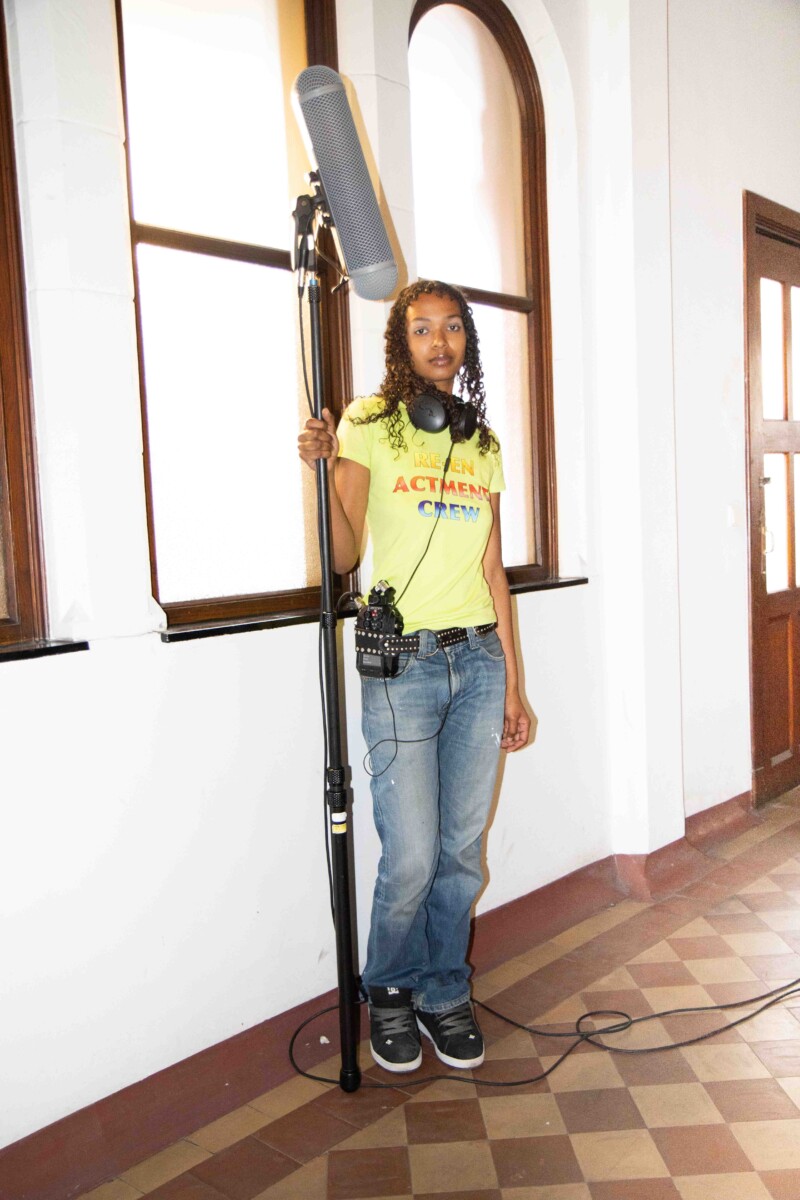

Did you think it was a successful jury?
Yes! There was friction. One of the jury members felt uncomfortable and angry because everything was being documented by the film crew I had placed in the room (AND ACTION!), while someone else said: “This is really amazing, you are very conscious and I think this is what it's all about.” For me, the camera functions as an intensification of the NOW: an aggressive catalyst of consciousness. Its presence forces those present into a heightened (existential) alertness.
I see Kaspar lurking in the corner, eyeing your apple.
An apple engraved with the word ‘einmalig’ lay rotting in the space under warm temperatures. Its engraving slowly became unreadable. TYD TARD WAERHYT.
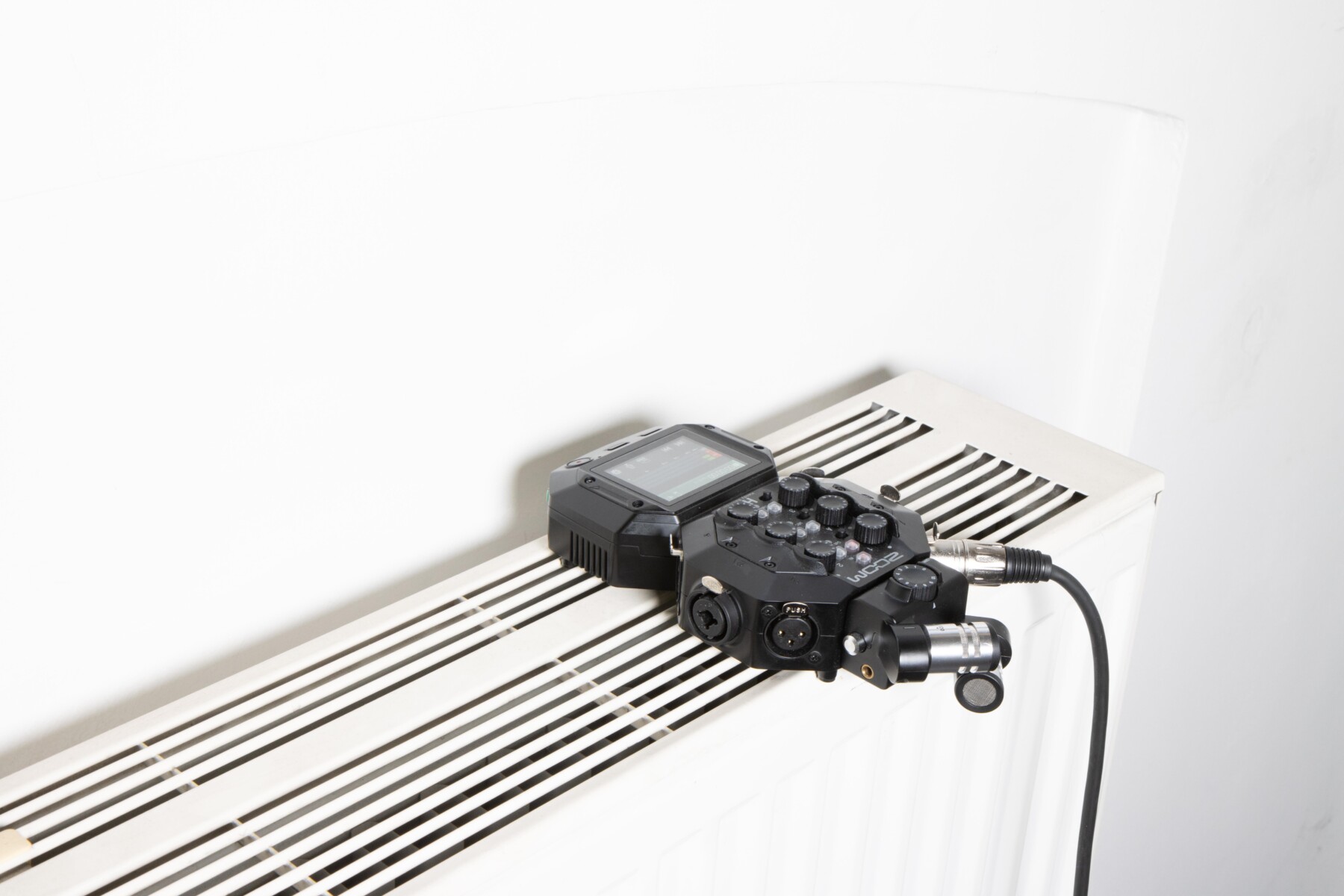

text: Liene Aerts







